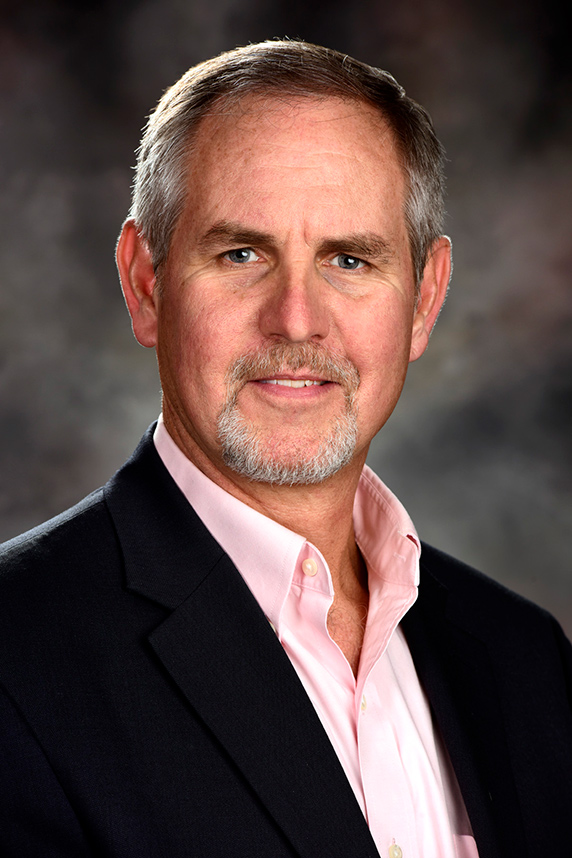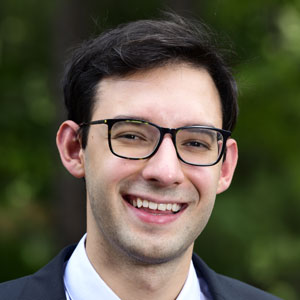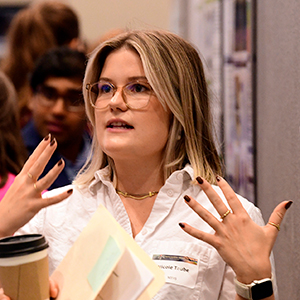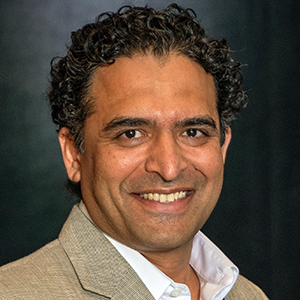Brian Berridge, D.V.M., Ph.D., scientific director of the NIEHS Division of the National Toxicology Program (DNTP), discussed the state of toxicological risk assessment and how new insights may help researchers better identify and predict human health hazards Aug. 12.
 Before joining DNTP in 2018, Berridge worked for 17 years in the pharmaceutical industry as a toxicological pathologist. (Photo courtesy of Steve McCaw)
Before joining DNTP in 2018, Berridge worked for 17 years in the pharmaceutical industry as a toxicological pathologist. (Photo courtesy of Steve McCaw)He spoke online with a group of international scientists about DNTP efforts to reduce the use of animals in chemical safety testing, to keep pace both with emerging substances and the technology used to study them, and to communicate findings with stakeholders and the public (see sidebar).
“Toxicology was largely founded on a pretty fundamental idea, which is the notion that nearly everything can do harm in sufficient quantities,” Berridge said during the event, which was sponsored by the World Health Organization Chemical Risk Assessment Network. “In the last 500 years or so, we recognized that it’s a little bit more complex than that,” he noted.
Capturing real-world complexity
“The context in which an agent interacts with a host is also important, and that’s where a lot of the complexity has come from,” Berridge pointed out. He said that understanding individual susceptibility — a person’s unique biological response to a given substance — is critical. That susceptibility is based on a variety of factors, such as genetics, age, gender, and race.
Further, biological effects may in some cases take years to become apparent. “We’ve gotten pretty good at recognizing things that will harm you or kill you quickly, and now we’re more interested in things that are less obvious, things that take longer to develop or are influential at lower doses over chronic exposures,” said Berridge, pointing to lead as an example.
Adding to the list of research challenges is the fact that the scope of toxicology has expanded to include a number of different environmental agents, according to Berridge.
 Berridge's talk was titled 'Characterizing Hazard and Risk in Mechanism-Based Toxicology.'
Berridge's talk was titled 'Characterizing Hazard and Risk in Mechanism-Based Toxicology.'“We’re not just looking at industrial chemicals or consumer products,” he noted. “That is best represented by one of our more recent monographs on radio frequency radiation associated with cell phone use. We’re still trying to understand those findings, but the moral of that story is that it’s not just about chemicals anymore — there’s a much broader concern around other things we’re exposed to in our environment.”
From observation to prediction
Attempting to scientifically capture such real-world complexity is expensive and time-consuming, and interpreting results can be difficult, according to Berridge. He noted that although traditional animal models are still a vital part of the National Toxicology Program portfolio, a major goal is to develop alternative approaches that more rapidly assess potential hazards. The hope is that doing so will help scientists move from observation to prediction while reducing costs and improving efficiency.
“I think the best known, most visible effort we’ve had to try to meet this aspiration is the Tox21 [Toxicology in the 21st Century] program,” said Berridge. “We have partnered in the development of high-throughput assay systems that give us some fundamental insights into mechanistic bioactivity. This is done at a large scale, using a 10,000-compound library,” he said.
“The idea is that if I generate a lot of information about a critical mass of chemicals, I can take a novel chemical and start to make some inferences based on similarities in structure, for example,” Berridge explained. Beyond high-throughput screening and animal models, DNTP takes advantage of traditional tools such as comprehensive scientific literature reviews to draw more meaningful conclusions about a particular agent.
Focused on common diseases
Berridge said that a strategic focus at DNTP going forward will be on what he calls health effects innovation areas. The idea is to start with common conditions such as cardiovascular disease, neurodevelopmental disorders, and cancer and to work backward to learn how the environment may influence them.
“It’s in its infancy, but I think it’s a very important complement to the overall approach to hazard assessment and risk characterization — actually taking the diseases that are prevalent and trying to understand them as opposed to looking for more rare [biological] events,” he said.
(Jesse Saffron, J.D., is a technical writer-editor in the NIEHS Office of Communications and Public Liaison.)









